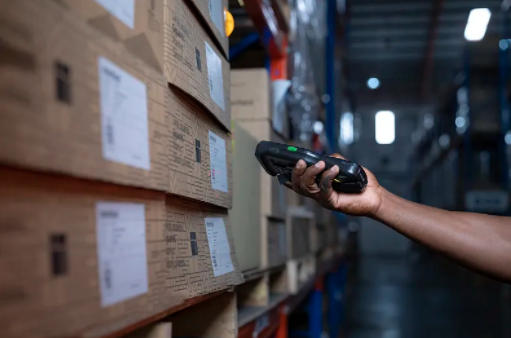In today’s fast-paced logistics landscape, warehouse management faces numerous challenges that often lead to inefficiency, errors, and disorganization. From inaccurate inventory counts to slow order fulfillment, these “messy things” can significantly impact your bottom line. The good news is that a cutting-edge solution exists to streamline your operations and eliminate the chaos: RFID tags.

What Are RFID Tags and How Do They Work?
RFID tags are small devices containing a microchip and antenna that can store and transmit data via radio frequency waves. Unlike traditional barcodes, which require line-of-sight scanning, RFID tags can be read from a distance and do not need direct contact with the reader. This technology enables seamless tracking and identification of items throughout your warehouse ecosystem.
RFID systems consist of three main components:
- 태그: These contain unique identification information and can be attached to products, pallets, or even warehouse equipment.
- Readers: These devices capture data from the tags and transmit it to a central system.
- Software: This processes the data and integrates it with your warehouse management system (WMS) to provide real-time insights.
Common Challenges in Warehouse Management
Before exploring how RFID tags can transform your operations, it’s important to understand the specific pain points they address:
1. Inventory Accuracy Issues
Traditional inventory management often relies on manual counting, which is time-consuming and prone to errors. According to industry research, warehouses using manual processes typically experience inventory accuracy rates of only 60-70%. This leads to stock discrepancies, overstocking, and lost sales opportunities.
2. Slow Order Fulfillment
The order fulfillment process is critical to customer satisfaction. However, manual picking methods often result in:
- Picking errors (wrong items or quantities)
- Delayed order processing
- Increased labor costs
3. Poor Visibility and Tracking
Lack of real-time visibility into item locations creates significant challenges:
- Difficulty locating specific products when needed
- Inability to track item movements through the warehouse
- Increased risk of theft or misplacement
4. Inefficient Space Utilization
Many warehouses struggle with optimizing their physical space:
- Poor layout planning leading to wasted cubic footage
- Difficulty in organizing items for efficient retrieval
- Suboptimal storage allocation
5. High Operational Costs
The cumulative effect of these inefficiencies results in:
- Increased labor costs
- Higher inventory carrying costs
- Reduced productivity
- Potential lost revenue from fulfillment errors
How RFID Tags Can Revolutionize Your Warehouse Management
RFID technology addresses these challenges by automating processes, improving accuracy, and providing real-time visibility. Here’s how:
1. Dramatically Improve Inventory Accuracy
RFID tags enable automated, real-time inventory counts that eliminate manual errors. Studies have shown that warehouses implementing RFID can achieve inventory accuracy rates exceeding 99%. This means:
- Accurate stock level tracking at all times
- Reduced instances of stockouts and overstocking
- Better inventory control and optimization
2. Accelerate Order Fulfillment
RFID-powered picking systems guide warehouse staff through the picking process, ensuring they find the correct items quickly and efficiently. This results in:
- Reduced picking time by up to 50%
- Fewer picking errors
- Faster order fulfillment and improved customer satisfaction
3. Achieve Complete Visibility
With RFID, you can track items throughout their journey in the warehouse:
- Real-time location tracking of products
- Automated monitoring of item movements
- Better control over valuable assets
4. Optimize Warehouse Layout
RFID data provides valuable insights into warehouse operations, allowing for:
- More efficient storage planning
- Better space utilization
- Streamlined workflow design
5. Reduce Operational Costs
The automation and accuracy provided by RFID lead to significant cost savings:
- Reduced labor costs through improved efficiency
- Lower inventory carrying costs due to optimized stock levels
- Minimized order fulfillment errors
- Enhanced overall operational productivity
The Leadercolor Difference
Leadercolor understands the unique challenges faced by modern warehouses and offers high-quality, reliable RFID solutions designed to simplify your operations and boost efficiency. Our expertise in RFID technology ensures you get a solution tailored to your specific needs.
By implementing Leadercolor’s RFID tags, you can:
- Achieve seamless integration with your existing systems
- Benefit from our comprehensive support and consultation services
- Enjoy long-lasting performance and durability from our premium tags
Make the Switch to RFID Today
If you’re still struggling with the “messy things” of traditional warehouse management, it’s time to give RFID tags a try. The technology has proven its value in streamlining operations, reducing errors, and improving efficiency across industries.
Contact Leadercolor today to learn more about our innovative RFID solutions and discover how they can transform your warehouse management operations for the better.
YouTube: @Leadercolor
LinkedIn: @Leadercolor
전화: +86-755-89379391
E-mail: [email protected]
Our website: www.leadercolor.com

